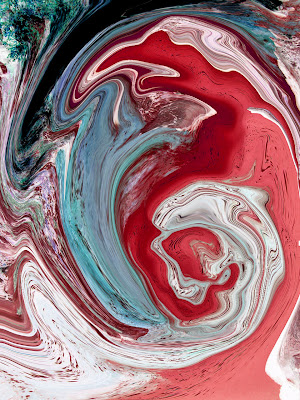Sometimes I find myself doing surprising things - and today was one of those days.
I'm not a quilter as I've always thought it was too formal for me as a technique - too rigid and mathematical - so I generally avoid occasions when I might be asked to quilt. Today though,
Great Western Embroiderers, the group I stitch and exhibit with, had invited the excellent Kate Dowty to do her
Scrappy Collage workshop for us.
We had a lovely day - and I quilted along with all the others, and much to my surprise, enjoyed myself. Kate had brought along small examples of her quilted wall hangings to inspire us. Her work can be found on her
website and is well worth a look.

We were asked to create a layered and quilted representation of a hedgerow, a field with wild flowers or a flower border in our garden. I chose (approximately) the last of these.
Kate demonstrated the layering techniques and her informal approach - not a cut hexagon or formal quilting layout in sight. This is definitely my sort of quilting - layering and machine stitching I can do.
I have not finished my piece. I've realised that in workshops I'm a slow worker - in fact I get really flustered if I feel I have to rush - and there's no pleasure in that. I like to think about what I'm doing and try out composition and colouring at leisure.
Though I don't feel the colours work and there is still a lot to do, if I choose to do it, I'm posting what I've done so far to give some idea of what we were asked to do and of Kate's approach.
I've also asked Adobe Photoshop to get to work on the colours and I much prefer the results, especially the second of the two.
I think this, if nothing else, is definitely a technique and approach to have in my armoury, though I won't be using it in the pieces I'm working on right now, or probably for some while, though you never know.
If you get a chance to hear Kate talk or attend a workshop with her, do - she is very approachable and a reassuring and gentle teacher.



















